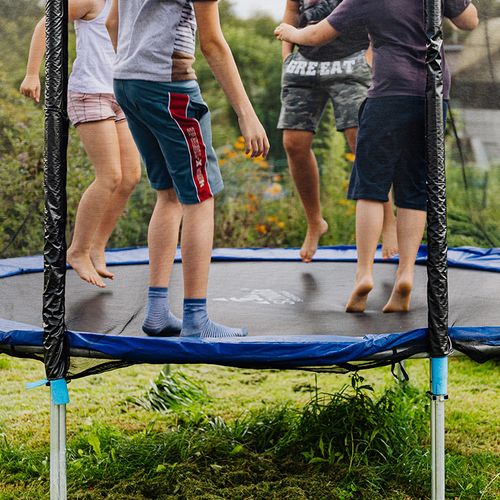Emergency room visits due to trampoline injuries have almost doubled since the early 1990s, new research shows. An estimated 75,000 children are injured each year, and 91% of those injuries occur on backyard trampolines, says Dr. James Linakis, study author and a pediatric emergency physician at Hasbro Children's Hospital in Providence, Rhode Island.
Study Results
Citing an increase in trampoline-related injuries, in 1999 the American Academy of Pediatrics (AAP) issued a policy recommending that trampolines not be used at home or for physical education classes at school.
Because of this policy, Linakis says he expected his research would show a drop in the number of trampoline injuries. Instead, the study found that there has been a dramatic increase in trampoline injuries in the ER.
Linakis and his colleagues reviewed national data on trampoline injuries in 2001 and 2002 collected by the US Consumer Product Safety Commission and compared it with data collected for a study that looked at trampoline injuries from 1990 through 1995.
In the early 1990s, approximately 42,000 children hurt themselves badly enough each year to require an emergency room visit. But, by 2001-2002, that number had jumped to almost 75,000 annually.
The number of injuries requiring hospital admission also increased dramatically, from 1,400 each year in the early 1990s to 2,218 annually by 2001-2002.
The average age of the children injured was 9, and 53% were male. The most common injuries were bruises, cuts, fractures and dislocations, Linakis reports.
He says the researchers were not able to collect information on exactly how the injuries occurred, but allowing more than one child on a trampoline at a time is a significant source of injury.
Reaction
"This problem has not gone away," Linakis says. "The home environment and even the school environment are not the place for trampolines. While not a popular idea, trampolines are really only appropriate in very select, heavily supervised environments, such as a gymnastics school.
Linakis says he is not sure why the injury rate is going up so dramatically, but speculates, "Either we're not getting the message out or we are getting the message out and people aren't paying attention."
"Supervision is key to avoiding injuries," adds Dr. Karen Sheehan, medical director for Injury Prevention and Research at Children's Memorial Hospital in Chicago. If you have a trampoline at home, make sure you're always close by, supervising children when they're on the trampoline, she advises.
Nets that enclose the trampoline may help, but both experts say nets have not been studied to determine if they make trampolines safer. Sheehan adds that many injuries, such as broken bones, occur even when children don't fall off the trampoline, so a net won't help avoid those injuries.
Trampoline Safety
The US Consumer Product Safety Commission reports that six children have died using trampolines since 1990. To keep children safe, the Commission recommends…
- No children under 6 use a trampoline.
- Don't have ladder access to your trampoline because small children can then climb up unsupervised.
- Don't let older children attempt somersaults—doing so increases the risk of a serious head or neck injury.
- Make sure the trampoline is not near tree branches or playground equipment.
